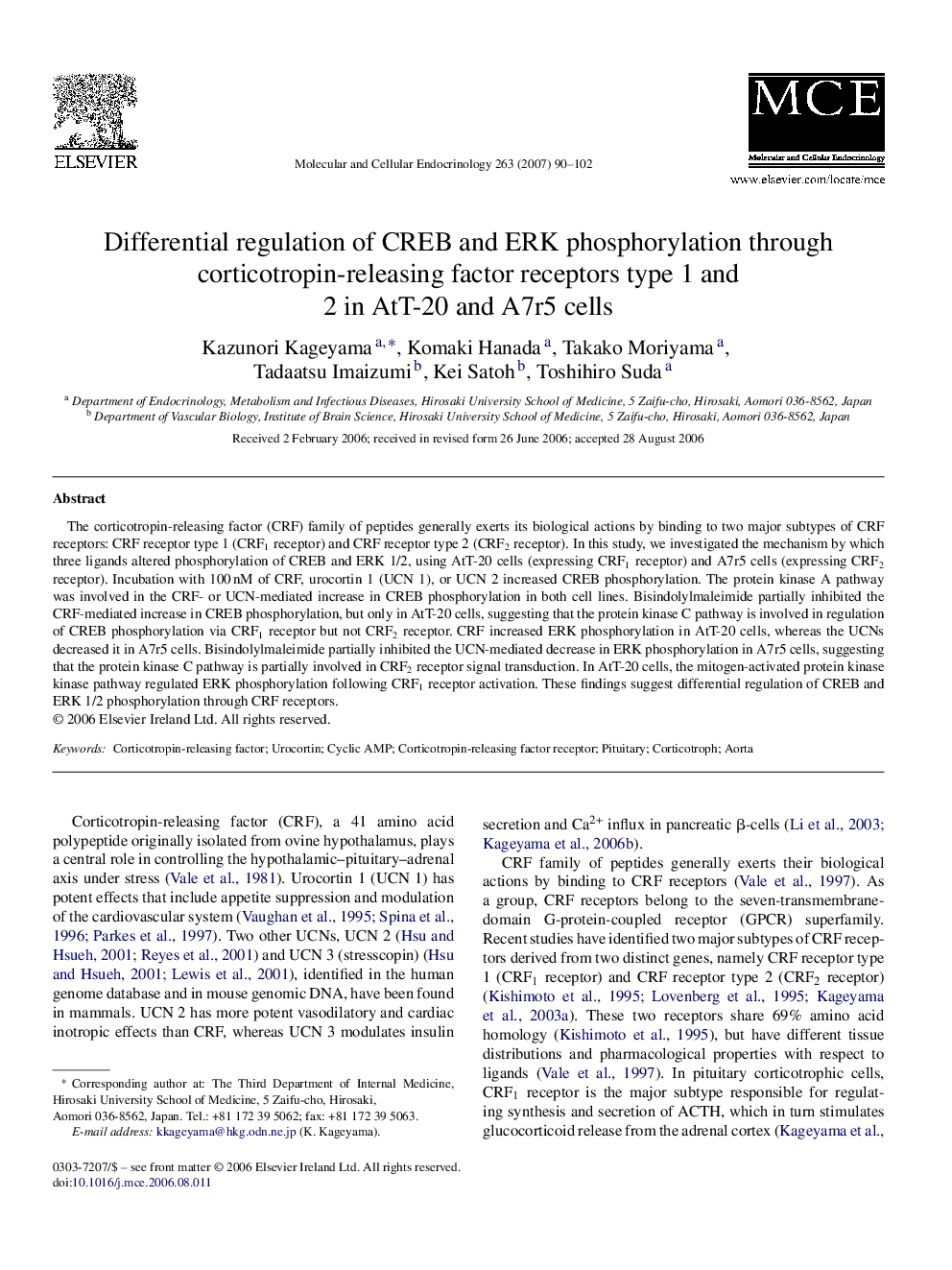| Article ID | Journal | Published Year | Pages | File Type |
|---|---|---|---|---|
| 2198050 | Molecular and Cellular Endocrinology | 2007 | 13 Pages |
The corticotropin-releasing factor (CRF) family of peptides generally exerts its biological actions by binding to two major subtypes of CRF receptors: CRF receptor type 1 (CRF1 receptor) and CRF receptor type 2 (CRF2 receptor). In this study, we investigated the mechanism by which three ligands altered phosphorylation of CREB and ERK 1/2, using AtT-20 cells (expressing CRF1 receptor) and A7r5 cells (expressing CRF2 receptor). Incubation with 100 nM of CRF, urocortin 1 (UCN 1), or UCN 2 increased CREB phosphorylation. The protein kinase A pathway was involved in the CRF- or UCN-mediated increase in CREB phosphorylation in both cell lines. Bisindolylmaleimide partially inhibited the CRF-mediated increase in CREB phosphorylation, but only in AtT-20 cells, suggesting that the protein kinase C pathway is involved in regulation of CREB phosphorylation via CRF1 receptor but not CRF2 receptor. CRF increased ERK phosphorylation in AtT-20 cells, whereas the UCNs decreased it in A7r5 cells. Bisindolylmaleimide partially inhibited the UCN-mediated decrease in ERK phosphorylation in A7r5 cells, suggesting that the protein kinase C pathway is partially involved in CRF2 receptor signal transduction. In AtT-20 cells, the mitogen-activated protein kinase kinase pathway regulated ERK phosphorylation following CRF1 receptor activation. These findings suggest differential regulation of CREB and ERK 1/2 phosphorylation through CRF receptors.
